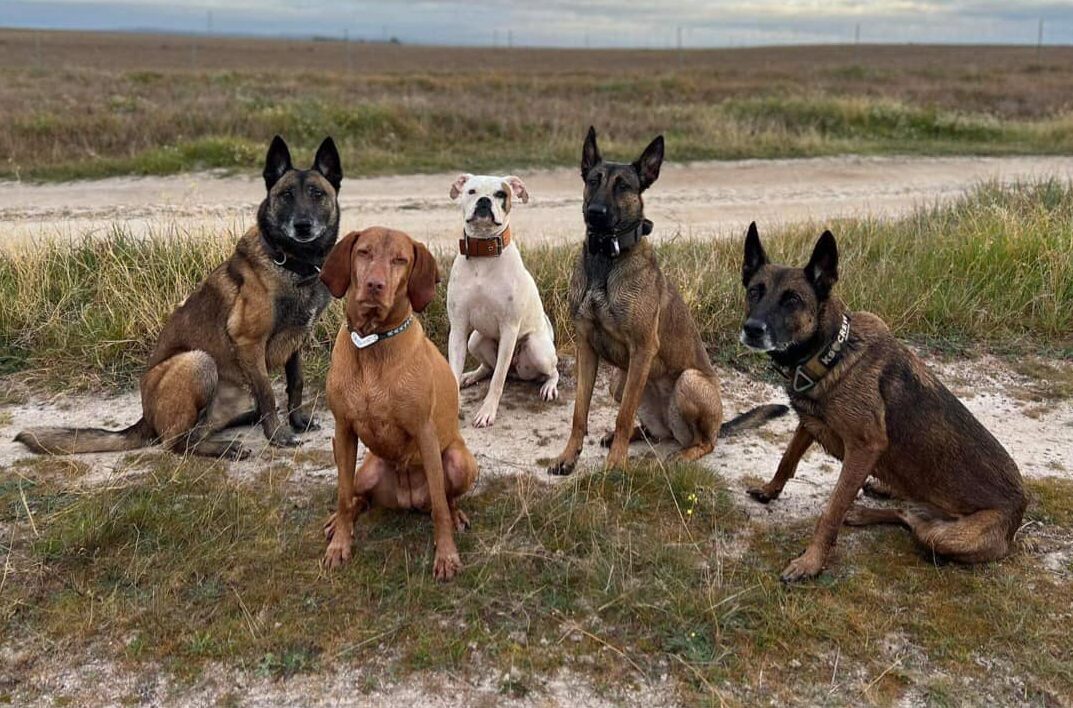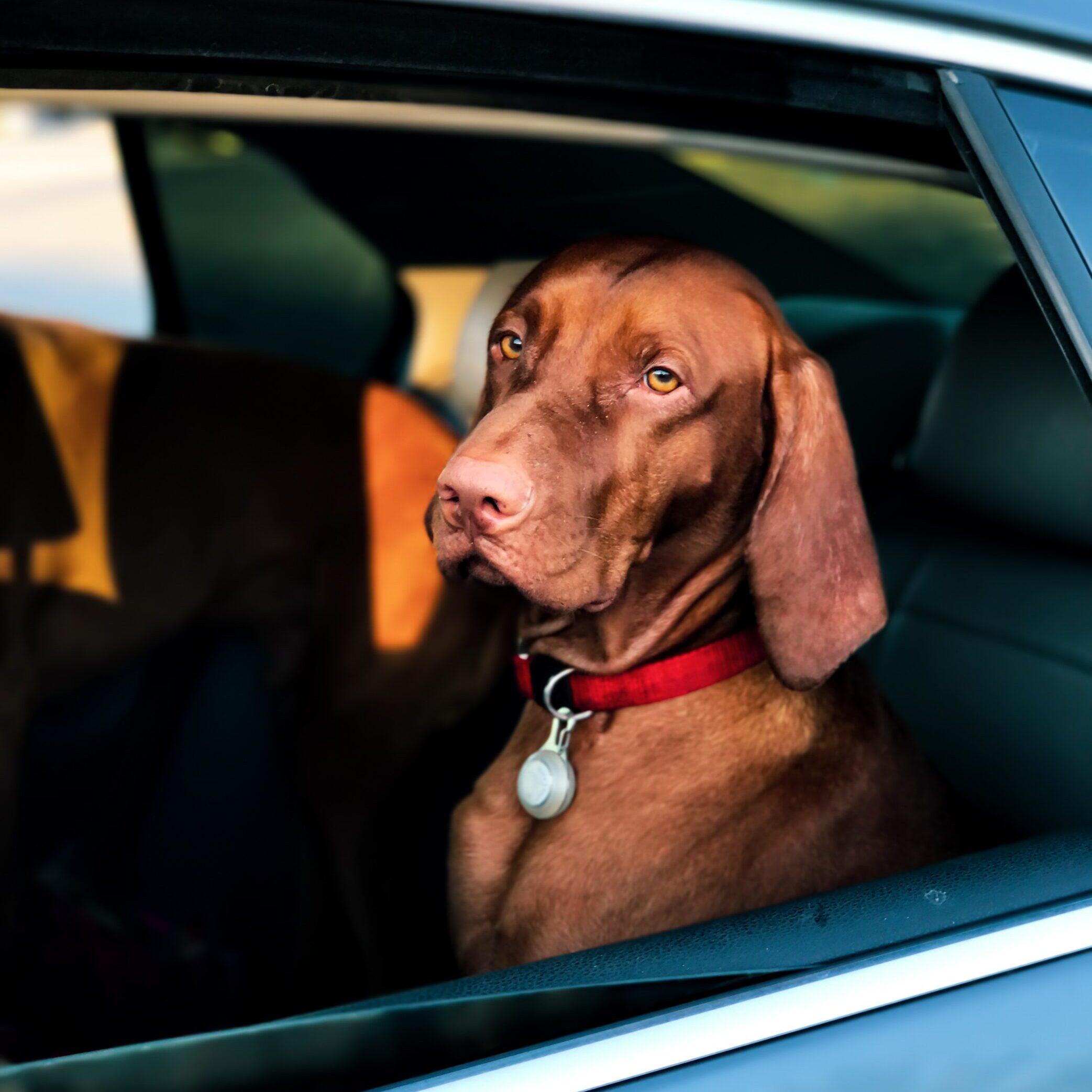

Traveling with dogs
With The Scottish Dog Behaviourist
“My name is Craig Avery, The ‘Scottish Dog Behaviourist’. Over the past decade I’ve had the pleasure of successfully working with over 1400 dogs and their owners on a one-to-one basis.”
There are a lot of reasons for people traveling and when you love your little furry friend, you might want to take your furry family member with you.
This could be for a holiday, moving (abroad), medical attention, adoption or fostering, pet shows, or simply because you spend as much time together as possible.
How to travel with dogs
There are different ways to travel with dogs.
Your choice can depend on the distance you’re traveling, the means you have to travel, and where you have to travel to.
You can choose for road travel, public transport, ship or boat travel, or air travel.
Road travel
Road travel is by far the most popular way of traveling with dogs.
Often dogs are used to traveling in a car because it is used for short and local trips.
They understand what is happening when they are used to a car.
You can use a pet carrier or special car seat belts for dogs, so you can transport dogs safe and comfortable.
Public transport
Using public transport when traveling with dogs can be difficult.
Not all public transport allows pets or there are rules and regulations to follow.
You might need to carry your dog in a bag or carrier, which isn’t always handy when using public transport, and depending on the size of your dog.
Most dogs do well when traveling with public transport.
Ship or boat travel
If you’re embarking on a cruise or traveling by ship, inquire about their pet policies.
Some cruise lines and ferries offer accommodations for pets, while others may require them to travel in dedicated pet areas or in carriers.
Not all boats and ferries allow pets, and if they do, you usually need to contact them for a booking.
Air travel
When you want to travel a long distance or internationally air travel for dogs might be necessary.
Not all airlines allow dogs to travel with you.
So, you should always check with your airline if you can take your dog.
Depending on the size of your dog, it can travel in the cabin or as cargo as checked baggage.
How do you choose the type of transport for your dog?
There are a few things to consider when you want to transport your dog.

A Dog’s Personality
Dogs are characters, they have a personality, and what suits one dog, might not suit another.
The Scottish Dog Behaviourists will give you some insights regarding the type of dog you have, and which type of transport is best for your furry friend.

Dog Travel Distance
The distance you need to travel is maybe the most important thing to consider.
Especially when traveling long distances.
For short trips, you can use your own vehicle or public transport.
For longer journeys you might want to consider air travel or pet transportation services.

Your dog’s health
Your dog’s health may also influence your choice.
When your dog has health issues, you want the least stress and the most comfort possible.
And when transporting for medical care, you want to consider all safety options.

The size of your dog
Dogs come in all different sizes and shapes.
So not all transport may be suited.
Public transport with a large dog might even be impossible.
Smaller dogs can be easily transported in a pet carrier or even a suited dog bag.
They can sometimes go with you in the cabin when using air travel, which is very rarely allowed with large breed dogs.

Rules and Regulations
Depending on where and how you travel with your dog, there will be rules and regulations to follow.
Each way of transport requires specific measures for your dog.
This can be a specific type and size of pet carrier or dog seat belts, but also things like a pet passport or an Animal Health Certificate, tapeworm treatment, rabies vaccines, and a microchip.

Safe Dog Travel
Always consider your dog’s wellbeing and safety.
This means planning ahead, so you have plenty of time to organise everything from vaccinations to a safe transport.
You also want a secure and safe environment for your dog during the transport.
This includes ventilation, the right temperature, food, water, exercise and bathroom breaks.
Written by
The Scottish Dog Behaviourist
My name is Craig Avery, The ‘Scottish Dog Behaviourist’.
Over the past decade I’ve had the pleasure of successfully working with over 1400 dogs and their owners on a one-to-one basis.

From general obedience to aggression, nuisance barking to separation anxiety,
I work with all breeds and all behaviours to achieve a balanced and harmonious life for you and your dog.
I use simple, smart, and kind training techniques, tapping into the dogs natural learning style, and allowing them to learn new pathways to success.
I like to think of it as ‘teaching’ rather than ‘telling’, using no force to achieve a desired result.
By understanding your dog’s personality, temperament and needs, we can identify why a behaviour occurs and set a plan in motion to modify it, allowing you and your dog to enjoy a stress free, happy life.
A dog’s behaviour and needs
In this article, we’ll look at the important aspects of pet transportation from the dog’s perspective, drawing from our expertise in understanding a dog’s behaviour and needs.
Whether you’re planning a short trip, a road trip slightly further afield, or even considering a much longer distance with your dog, we’ll cover each in more detail here.
We’ll help you understand the daunting prospect of travel from their perspective and look to address common anxieties that some dogs may experience during transportation.
Pet Transportation for Dogs
As much as you want/need them with you, whether it be for an extended holiday or relocating to a new country or destination or simply going to the park, it can often be a stressful experience for both you and your dog.

Understand your dog’s behaviour
Some of us have experienced the constant barking, whining, excitement, or stress behaviour.
when travelling with our dogs but can never work out why?
We need to try to understand what our dogs are thinking and trying to tell us, before opting to travel.
Often this will require some help and advice from a professional dog behaviourist.
Regular dog transport
Most of the time (if too far to walk) we’re travelling locally, popping into the car or bus/train/tram for a trip (or expedition in the dogs’ eyes) to the park, beach, town, etc.
For most of us it’s a quick ‘up’ and the dogs in the car, ready to go on a ride, not really much to think about… but you have.
Perhaps your dog whines with excitement and you use a travel crate to lessen the outside distractions, but overall, you know your dog is fine with this process, so no real change has to be considered.
Long distance dog transport
But what if you’re travelling further afield?
For a camping trip a few hours away, or a family occasion at the other end of the country.
Or even relocating or travelling abroad?
As we do with our own travel, you must plan your dog’s transport in meticulous detail, perhaps even more than your own, as they can offer no verbal input of their preference, or their concerns.
We have to consider them and their experience for them to ensure their safety and comfort.
Investigate your dog’s transport
Not only should you investigate each mode of transport in detail and look into time, costs, and logistics, but you must also take into consideration your dog and what they will experience on the trip.
Look at your dog’s temperament, do they have a nervous disposition?
Have they had bad experiences in the past?
Are they sensitive to motion or noise?
How are they in the company of other dogs and people?
They are so many considerations to think about before opting for a travel method of choice.
Means of transport
Dog transport by car
Most of us have had their dog in a car so we know what they’re like securely clicked in their seatbelt harness or travel crate in the back seat or boot area, relaxing as we take them to the park, beach, vet, daycare, etc.
Prepping your car
But how would they be travelling further.
For me, a recent 6-hour journey to the Scottish Highlands with one of my dogs saw me prepping my vehicle for her comfort and security.
Planning stops every hour or so for walks and toilet breaks in secure areas, avoiding motorway laybys or busy car parks, and plenty of opportunity for sniffs and at times, social interaction.
This would be similar if you were planning a trip to see family or friends at a similar distance.
Some would prefer to leave their dog(s) at home rather than go through the stress of having them in the car for this length of time.
Now consider even further, what if you were going to another country?
Would you drive them there yourself or would you look at a dog transportation company to do this for you?

Long distance dog travel
Before considering this as a mode of transport for long distance travel you MUST think about the experience your dog will endure.
Is your dog used to being driven in a car, are they comfortable with the sensations of motion and the noises involved, the turns on the road, speed differences and the motion it induces, and sudden stops?
How are they in a crated area, with other dogs, away from you, no visual comfort of seeing the driver for extended periods?
Not to mention being away from you during all of this.
Know your dog, look at the trip from their perspective. How can you make it easy for them?
For most dogs this is the norm and will take a car/van journey in their stride, resulting in this being the most popular option for owners transporting their much-loved pets.

Public Transport with your dog
Not everyone can drive so public transport is an invaluable mode of transport that many people use with their dogs.
Before travelling on a bus, train, tram, etc. though there are a number of factors you need to consider.
Rules and regulations
What are the rules?
Most providers will have an animal policy on their vehicles, no dogs on the seats, must be on a lead, must have identification (collar and tag), be prepared to clean up any mess your dog makes.
You must consider and plan accordingly for the public transport companies pet policy.
More importantly you have to consider your dog’s needs.
Your Dog’s needs when using public transport
If dogs aren’t allowed on the seats, then is the footwell or space around you suitable for their size and breed, they shouldn’t be cramped in a small space for any length of time to avoid discomfort and stress.
Time of travelling with your dog
When are you travelling?
Peak travel periods will, ‘by definition’, have more people travelling at that time.
A less crowded environment will minimise your dog’s anxiety and remember some commuters may be uneasy around dogs, which will heighten the stress for everyone involved.
Is your dog socialised?
Has your dog been properly socialised and are they used to busy environments with lots of movement like you find on public transport?
Are they reactive to people or other animals?
Remember there may be other people transporting their pets on the same journey.
Your dog’s focus
Will your dog ‘settle’, or ‘sit’ and ‘stay’ or simply focus on you and not react to their environment for the duration of the trip?
It’s worth considering ensuring your dog’s general obedience is up to shape to ensure a calm and safe journey.
Often, we can use ‘treats’, food/toys/praise to keep their focus in these situations, but will that work every time?
With every distraction?
I’ve found that an over reliance on ‘treats’ without prior training can be… unpredictable.
No public transport for dogs
If your dog can’t deal with the level of anxiety and could potentially react with aggression or over exuberance, then perhaps public transport isn’t for you.
Sea travel with dogs
As above with public transport, you have to be aware of the travel companies pet policies and adhere to them.
Dependent on the size of vessel you may want to consider a buoyancy aid, we carry one for our dog regardless, but thankfully have never had to use it (aside from swimming lessons of course).
Acclimatise your dog
Just as you may have done with your car it is important to acclimatise your dog with travelling on water.
Before setting sail, perhaps weeks and months before, you can get your dog used to the ‘motion of the ocean’, perhaps even going on a short ferry trip, the noise, smells, commotion of a larger ferry or liner could confuse
your dog so start small.
Sea sickness with dogs
You may have the chance to sit out on deck on so your dog has fresh air but consider again the loud grumble of the ships engine, the salty sea air and remember the higher on the ship you are the more sway or motion there
will be.
This can all be stressful for your dogs, and as a result you may have to clean up the results of sea or travel sickness (often out both ends of your dog), often caused by stress and/or anxiety.
If you think your dog may suffer from travel or motion sickness there are remedies, or natural alternatives your vet could prescribe to make the journey more comfortable for your dog.
You could also consider calming measures like a thundershirt or pheromone spray to help calm your dog for these stressful journeys.
Dog specific seating areas
You may find it better and it’s often required that you locate a rest area on the ship for you and your dog, often there are dog specific seating areas with laminate flooring to avoid any carpet damage from nervous dogs having
‘accident’s’.
Depending on where you’re travelling to, a ship, boat or ferry may be your only option so it’s best to ensure your dog is acclimatised or socialised to this new mode of transport be embarking.
Air travel for dogs
It can be difficult to get your dog used to this mode of transport before opting to fly but some are fine with it, others just have to adapt and survive the experience.
Pet air travel regulations
There are greater pet policy regulations for flying with a dog than most other modes of transport and for good reason.
Some airlines will allow in cabin travel if certain criteria are met but most of the time the dogs are transported in the cargo hold in a crate for the duration of the flight.
The upside of this transport mode is the time travelling is shorter, your dog will be travelling less time but potentially there can be more stress and anxiety involved.
Dog cargo air travel
They will (most of the time) be separated from you and escorted away, ultimately placed in a crate, and loaded into the cargo hold of the plane.
This is an unfamiliar and confined environment with strangers moving them about.
They will remain here for the duration of the flight with no exercise or toilet breaks.
The flight will be noisy and could induce anxiety in your dog given their sensitive hearing.
The dark and isolated surrounding of the cargo hold, away from their owner can also unnerve and heighten their anxiety and stress levels.
Temperature changes throughout the flight could also unnerve you dog, especially those that are sensitive to temperature fluctuations.
Picture yourself in this situation, how would it feel?
I’ve never had the need to this mode of transport for my dogs, but if I had no choice there are ways to help minimise the stress for our dogs. Speak to your local trusted dog behaviourist for advice on this.

Which is right for your dog?
From a behavioural perspective it’s important to understand how your dog will adapt with each mode of transport.
It’s imperative you understand your dog’s needs when selecting which mode of transport to use for its own safety and the potential trauma involved.
Short distance pet travel
For short distances, the chances are your dog is already used to these trips and will have no issues.
If they’re not you will have to plan ahead and get them used to the motion of the car, create a positive association with the car with play/food/praise then go for short trips to acclimatise your dog to the experience.
Public transport is very similar but it’s important to plan the time of day you travel and consider your dogs’ size, comfort, reactivity levels and temperament before opting for this.
Long distance pet travel
For trips much further afield, some airlines will allow your dog in the cabin with you, but you may be asked to keep it in a crate for the duration (or at least most of) the flight.
I have a client who flies abroad with his pooch regularly and his dog can get stressed when in the crate, just metres away from its owners but calm as a puppy when out the crate and next to them. It’s more common that the
dog will be in the cargo hold, especially if the owners aren’t travelling with them.
If you’re travelling a further distance and/or travelling with you is not an option, you may wish to consider a professional pet transportation company.
Pet transport companies
Pet transportation companies are experienced in all logistical aspects and legal requirements in the transportation of pets.
They give you the peace of mind that your pet will be safe throughout the journey, often giving updates on the trip.
They can work with airlines, ground transportation companies and other travel partners to coordinate the entire pet travel process in a way that is acceptable to you.
Although if using a transportation business, firstly, investigate the company you are using, get to know them and the full process they follow when transporting.
Ask for an itinerary of the travel plans including the planned route, how long it will take, how many stops will there be and how often they stop to let the dogs out.
Many transportation companies are transparent in their practices as they understand the concerns of dog owners and have a love of animals, placing their safety and care at the heart of their business.
Summary
As their guardian it’s our duty to prioritise their comfort, safety, and happiness when travelling.
Understanding your dog’s unique needs and temperament will help you to make the best decision for them, whether it’s a car ride to the park, a train or bus ride to the beach, island hopping on a ferry or flying to a foreign
land it’s imperative that to ensure a safe and comfortable trip.
Be aware of your own dogs’ specific needs, provide familiar comforts, and choose a mode of transport that’s suitable for them.




